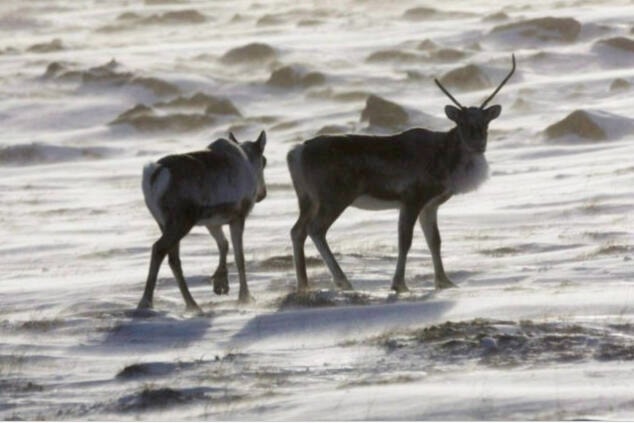Heather Wiebe, director of the B.C. Caribou Recovery Program (CRP) along with Wildlife Biologist Leo Degroot made a presentation to the RBN committee of the whole about predator reduction project.
The project involves the aerial removal of wolves to aid caribou recovery in the area, along with the province as a whole. According to Degroot, there are 55 herds of caribou in B.C., and despite significant investments to increase population, they continue to decline in numbers, and are considered a threatened species by the federal Species At Risk Act.
The reasons for the decline are multiple, including habitat loss, climate change and displacement from human activities.
Culling of wolves has been in progress since 2015 for some of the province, and in 2019 the B.C government approved a predator reduction program for a two year term, adding several other areas in the province, which has now expired, and the CRP is engaging on the prospect of continuing.
“Herds are recommended for predator reduction if data indicates wolf predatation is a limiting factor on the herd, and if ground based hunting and trapping activities alone can’t achieve desired wolf densities,” said Degroot. The desired wolf density is less then three wolves per 1000 squared km.
Since 2015, 1,429 wolves have been removed, and monitoring shows this to be an effective tool for stabilising the herds, though it isn’t a long term solution according to Degroot. “This is a short term solution while the habitat is recovering through restoration activities and natural succession.
In a graph presented by Degroot, RDBN was shown that in the south peace herd, the population was 600 in 2002, declining to below 200 by 2015 when wolf culling began. Since that time, the population has risen to 300.
The closest herd to the area is called the Southern Mountain Northern group, which is located from the south of Smithers down through Tweedsmuir provincial park.
Director of Electoral Area E Clint Lambert was very supportive of the program sighting issues he’s had with wolves killing cattle on his ranch. “We’ve lost a lot of cattle the past two years and taken quite a hit, so I fully understand the issue with and overpopulation of wolves especially in Tweedsmuir Park,” said Lambert.
Another aspect to the project is the culling of cow and calf moose. The reason for this is that the government believes that the management of cow and calf moose will help reduce the wolf population because it’s their main source of food, which in turn would reduce the threat to caribou.
This was something that the RDBN committee strongly disagreed with, including Lambert. “I don’t agree with the science at all. The idea that killing moose will somehow starve the wolves out is something I can’t understand,” said Lambert. “Wolves aren’t picky, they’ll find other food sources other then moose so you’re culling moose really for no reason at all.”
READ MORE: Half a million people petition B.C. to end wolf hunt practices
READ MORE: Province to go ahead with cow and calf moose harvest in Kootenay and Omineca regions
Have a story tip? Email:
Eddie Huband
Multimedia Reporter
eddie.huband@ldnews.net
Like us on Facebook and follow us on Twitter.
